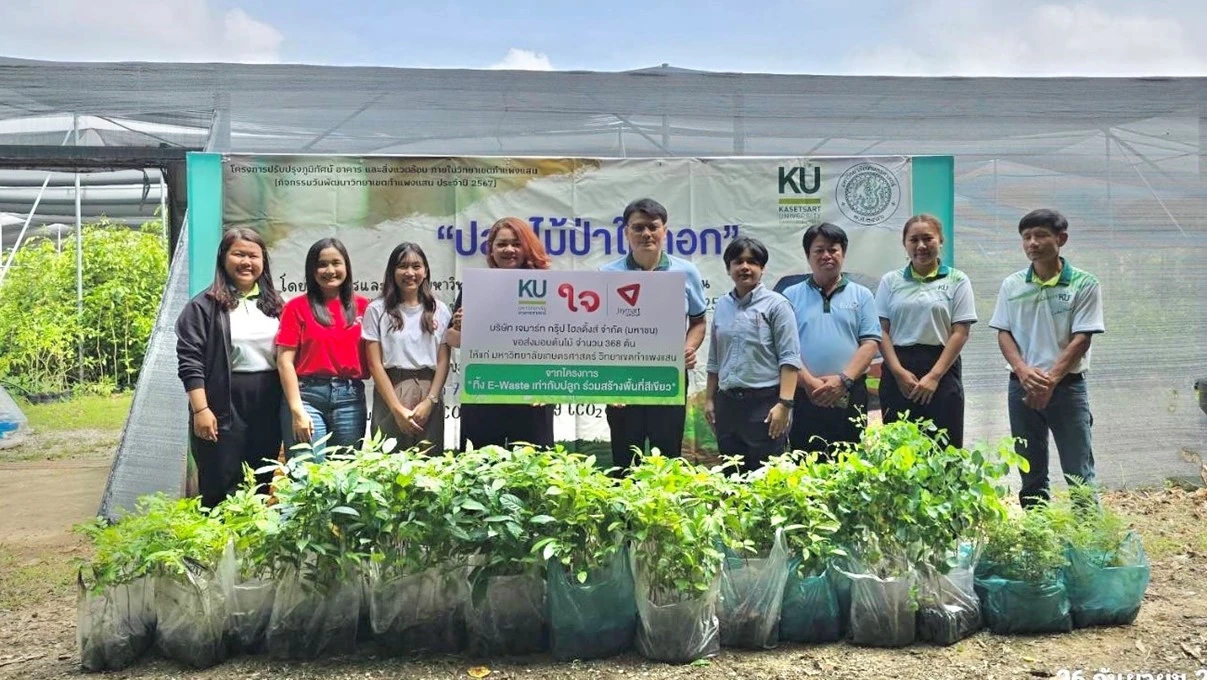Biodiversity

Our Commitment
Amid the escalating climate change crisis, which directly impacts biodiversity and the balance of ecosystems, Jaymart recognizes the significance of these effects and is committed to conducting its business sustainably throughout every step of the value chain.
This includes transportation processes, water and energy resource utilization, warehouse management, and distribution. The company acknowledges that these activities could potentially have negative impacts on the environment and biodiversity if not managed and controlled appropriately.
As a result, Jaymart has established a formal Biodiversity Policy, approved by the Board of Directors, to demonstrate its commitment to minimizing the environmental impacts of its business operations. This policy provides clear guidelines for monitoring and managing.
Supporting The SDGs Goal
Advancing global sustainability through alignment with the UN SDGs.
Stakeholders Directly Impacted
Goals
Jaymart Biodiversity Policy aims to align its business operations with maintaining ecosystem balance and taking responsibility for biodiversity. The policy sets clear goals as follows:
Preventing Net Biodiversity Loss (No Net Loss - NNL)
Committed to protecting forest areas to ensure no net deforestation.
Reducing Biodiversity Loss
Adopting the Mitigation Hierarchy approach to systematically minimize impacts, including:
In its current operations, Jaymart demonstrates its commitment to managing and preserving biodiversity in areas where the company operates, ensuring compliance with relevant laws, regulations, and requirements. The primary goal is to avoid causing negative environmental impacts that may arise from the company’s activities.
The company has also established a clear policy to avoid undertaking projects or developing businesses in areas critical to conservation or sensitive to biodiversity. These areas include UNESCO World Heritage Sites and International Union for Conservation of Nature (IUCN) protected areas categorized as Type I-IV, such as national parks, wildlife sanctuaries, and legally protected conservation zones. The focus is on preventing encroachment and destruction of ecosystems in biologically significant areas, ensuring that Jaymart activities are environmentally and resource-friendly.
Moreover, Jaymart places great importance on listening to the voices of communities and stakeholders who may be affected by its activities. The company has implemented mechanisms for receiving complaints and communicating with communities and stakeholders based on human rights principles aligned with international standards. This ensures that the perspectives and concerns of nearby communities are appropriately considered, particularly in biodiversity conservation and sustainability efforts.
Jaymart is dedicated to preventing and mitigating negative environmental impacts, thereby promoting socially and environmentally responsible development. The company continuously monitors and evaluates the implementation of this policy to ensure that it conducts business sustainably and contributes to environmental preservation for the future.
Management Approach
-
1The company recognizes the importance of selecting and developing environmentally friendly initiatives. It has also planned to develop and adapt its business processes to be more eco-friendly and supportive of biodiversity, aiming to enhance the efficiency of restoration and conservation efforts to maintain ecosystem balance.
-
2The company is committed to conducting its business operations without causing biodiversity loss or net deforestation, within manageable boundaries.
-
3
The company monitors and manages ecological risks that may arise from its operations by implementing mitigation measures based on the Biodiversity Mitigation Hierarchy, which includes the following steps:
Avoidance:Reducing encroachment and minimizing impacts on critical natural areas.Reduction:Implementing processes that mitigate environmental damage.Restoration:Restoring affected areas to their original condition.Offsetting:Compensating for natural resource losses in other areas when necessary. -
4The company is committed to avoiding business operations or project developments in conservation areas or areas that may impact biodiversity, such as UNESCO World Heritage Sites, areas protected under the International Union for Conservation of Nature (IUCN) Categories I-IV, and areas protected by local legal regulations.

